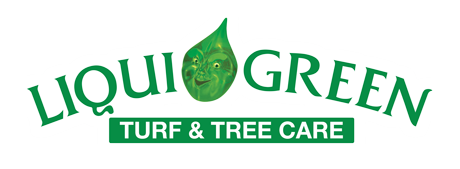5 Tips to Get the Best Looking Lawn in the Neighborhood
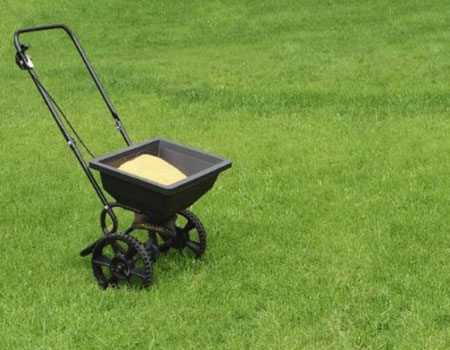
Feed Your Lawn at Regular Intervals
Many homeowners believe a one-time application of lawn food in the spring is enough to establish a lush, green lawn. The truth is, your lawn needs to be on a regular fertilization schedule to maintain a healthy green appearance. The most important nutrient for promoting and maintaining excellent turf color and growth is nitrogen. Applying the correct amount of nitrogen will promote growth and color and also improve its overall health. A healthier lawn will be better at resisting pests and diseases.
Mow at the Right Height
How you mow your lawn can impact its appearance and health. The minimum height recommended for the western slope is 2 ½ inches. However, 3 inches finished mowing height is ideal. By allowing the turf to grow to its optimum height, you’ll encourage it to establish a deeper root system. Taller turf grass will shade the soil (which helps conserve moisture) and helps prevent weed seeds from germinating. It’s also important to remove only 1/3 of the height of the grass blade at a time.
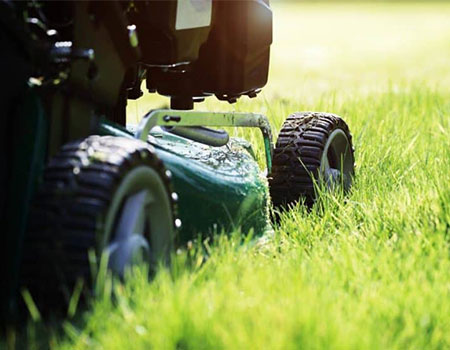
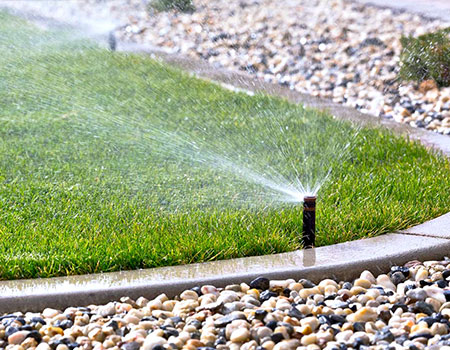
Properly Water Your Lawn
Watering your lawn every day for short periods of time is the incorrect way to supply it with the moisture it needs. The correct way to water your lawn is deeply and less frequently. Watering encourages the roots to grow much deeper into the soil. This will greatly strengthen the health of the lawn and ensure a much better chance of survival during periods of drought. If your lawn has a wilted appearance (usually represented by a grayish looking color) this is a sure sign watering is needed.
Control Weeds In Your Lawn
Controlling weeds in your lawn is much easier than you might think. If you’ve put steps 1 through 3 into practice, then you’re well on your way to a weed-free lawn. Feeding your lawn regularly, mowing at the correct height, and proper irrigation all work together to establish and maintain a thick, green and healthy lawn. Weeds have a much more difficult time getting established in a thick healthy lawn. An occasional weed will eventually pop up here and there in your lawn despite your best turf management efforts. However, spot spraying weeds with a turf safe herbicide is much easier than trying to rescue a lawn that’s completely overwhelmed by them.
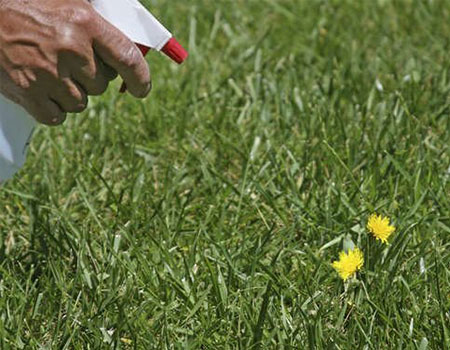
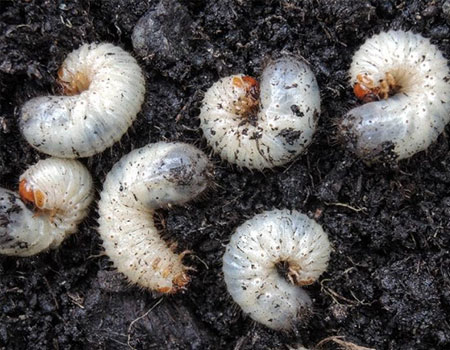
Prevent Grubs & Other Pests
In the Grand Valley, grubs are the most damaging insect pest to lawns. Grubs damage lawns by feeding on the roots of turf grass. To make matters worse, skunks and raccoons love to eat grubs and will further destroy your lawn as they dig up this fresh food supply. It’s much easier to prevent a grub infestation than it is to repair a lawn that has succumbed to grubs and the wildlife that chases after them. Grubs are best controlled in spring with a preventative grub treatment when young grubs are present in the upper root zone. Even if your lawn has never had a grub problem, it’s very wise to invest in a spring grub preventative program. Remember, prevention is the best cure.
